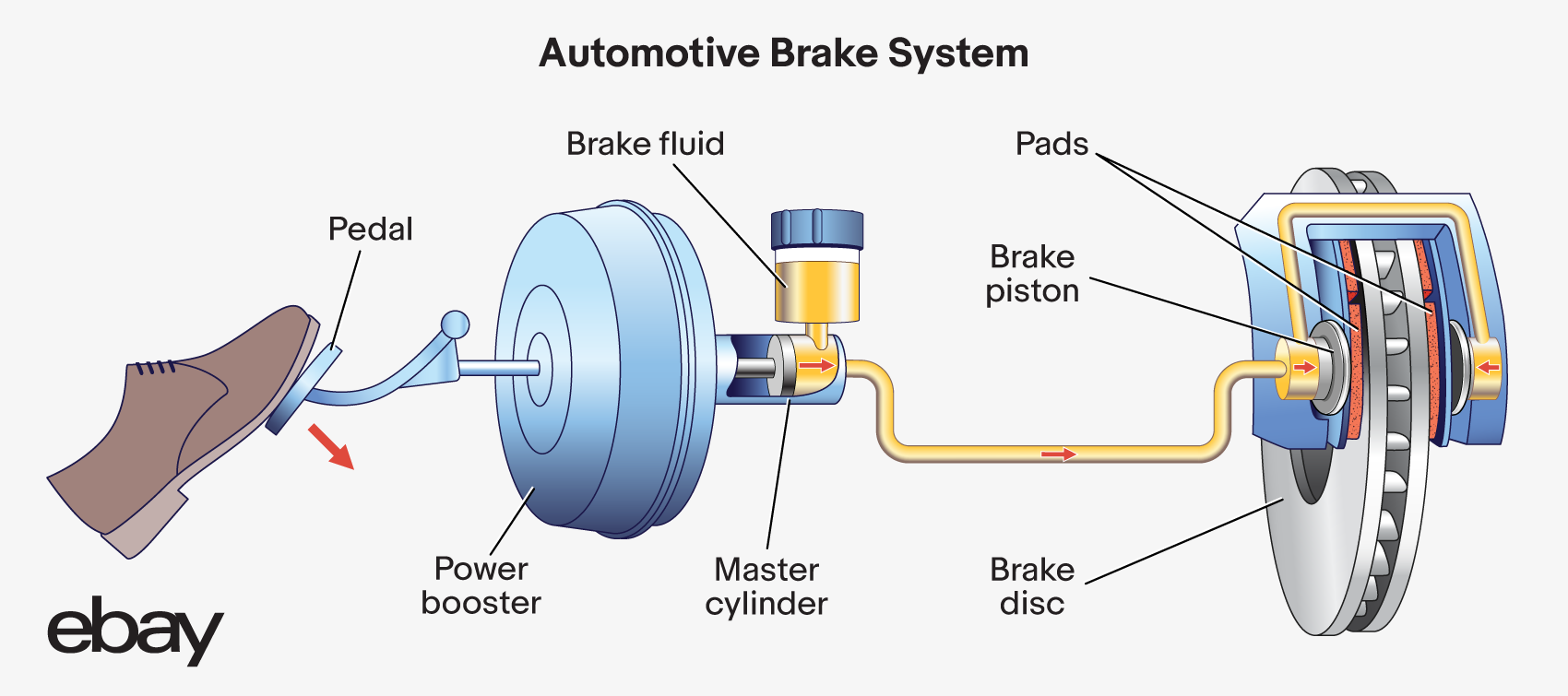Contents
How a Brake Pedal Works
The brake pedal is a rectangular pad connected to a mechanical linkage. That linkage pivots when the brake pedal is pushed and moves a rod within the master cylinder. This squeezes the brake fluid and exerts pressure on the brake lines to activate the brake pads at the wheels. If the car has power brakes, the pedal pushes through a brake power booster to generate additional braking power.
When the brake pedal is released, it pivots back and releases the pressure on the brake fluid. The brake pedal gives the driver a larger target area for the foot to access when depressing that linkage.
In new electronic braking systems—sometimes called “brake by wire”—sensors, actuators, and computers replace these analog components.
Brake Problem Diagnostics
Usually, applying the brakes goes smoothly. However, a brake pedal’s feel can reveal other problems with the car, so be mindful of any of these conditions.
Read: What Are Your Brakes Trying to Tell You?
Vibrating brakes – You might sense the brakes juddering or shaking, a sign that the brake rotor is warped and not consistently applying brake pressure to the system. A similar vibration occurs when you apply the brakes, and the anti-lock braking system (ABS) activates. The ABS uses a brake modulator to quickly start and deactivate the brakes, generating vibration in the brake pedal. This is expected when the ABS engages.
Soft or mushy brakes – This might indicate air in the line. Air can enter through a leak in the system or if the brake fluid reservoir is low. Generally, the brakes should be bled to remove the trapped air, and the system should be checked for the cause of the air in the system.
Hard brake – If the brake system requires more pressure than usual to stop, the power brake system might be failing. This must be quickly evaluated, as stopping a car with a malfunctioning power brake booster is more difficult.
Read: Our Step-by-Step Guide to Bleeding Brakes
Replacing the Brake Pedal Cover
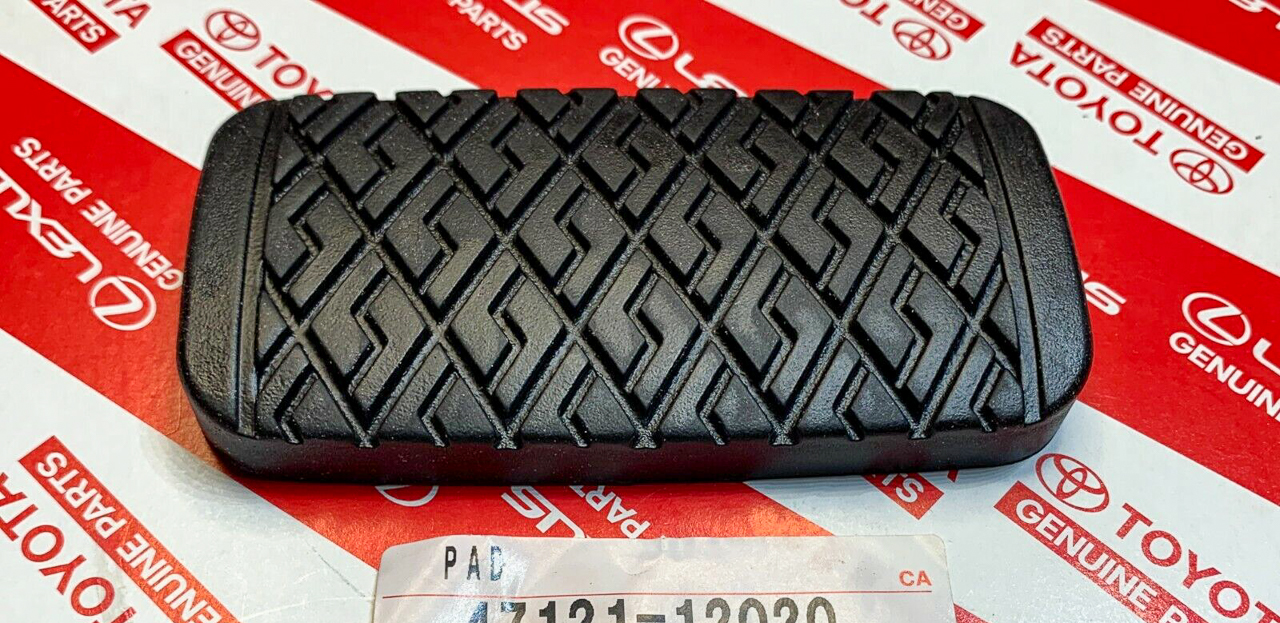
This OEM brake pedal cover pad fits 1970-2008 Toyotas from the Avalon to the Tundra.
The brake pedal on most cars consists of a rubber pad covering a metal stamping. Over time, this cover can wear and look ratty. An easy fix is to remove the rubber cover and replace it.
Brake pedal covers are designed to the manufacturer’s specifications and are easy to install. Just slip them over the original pedal.
Shop now for brake pedalsYou can also add style by using a custom cover that changes the look but maintains the feel. They come in various finishes and textures and are also easy to install.
Custom-fit pedals are available for specific makes and models to replace the original rubber pedal covers, while universal models can fit any car and budget. Many of them simply slide onto the existing pedals. Others attach with screws or brackets over the original pedal assembly.
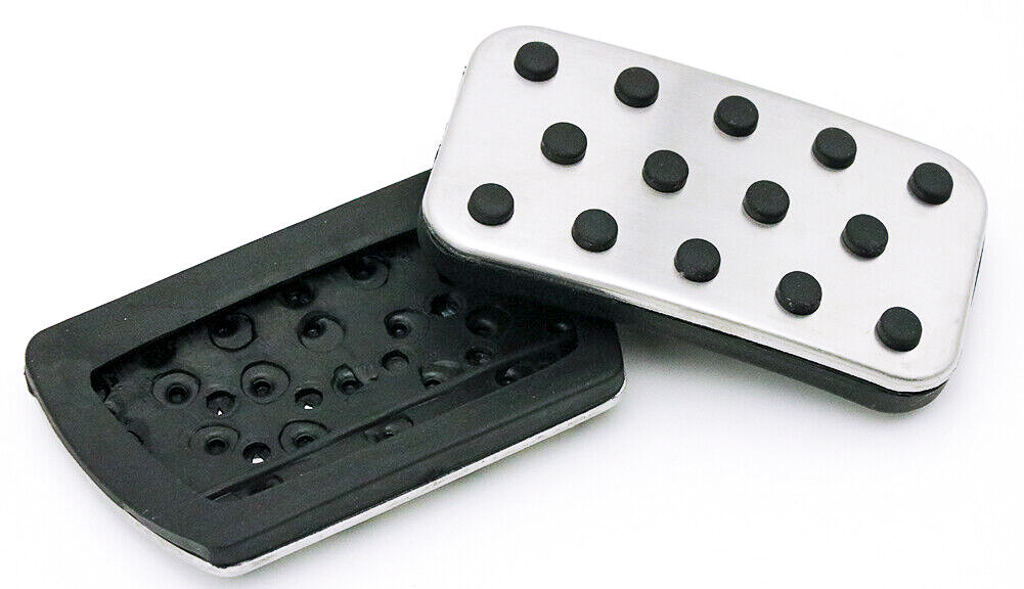
This performance brake pedal cover slips on like the original.
Some custom pedals have LED lighting to accent the driver’s footwell. Billet pedals, machined from a solid piece of aluminum, are extremely strong and look great.
Performance Upgrades
If you decide to upgrade the brake pedal, look for an exact fit replacement or a universal design similar in height to the original pedal pad. You want the upgraded pedal to allow a smooth pivot as your foot switches from the accelerator to the brakes.
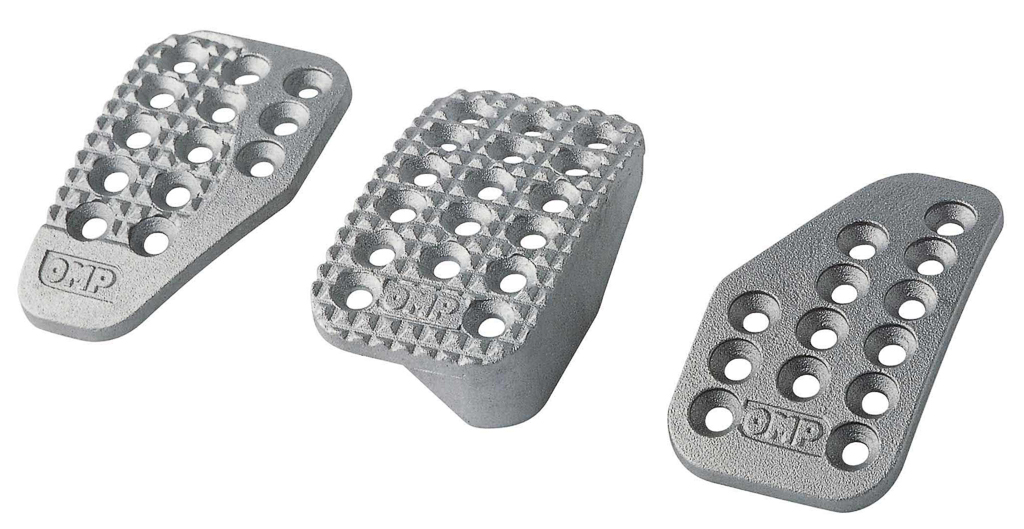
These curved aluminum OMP pedals are built for racing.
Some performance pedals securely slip over the stamped metal pad. Others might require modifications to securely fasten the new pad to the linkage. The brake pad must be firmly secured.
Read: Enhance Your Car’s Performance with a Brake Upgrade
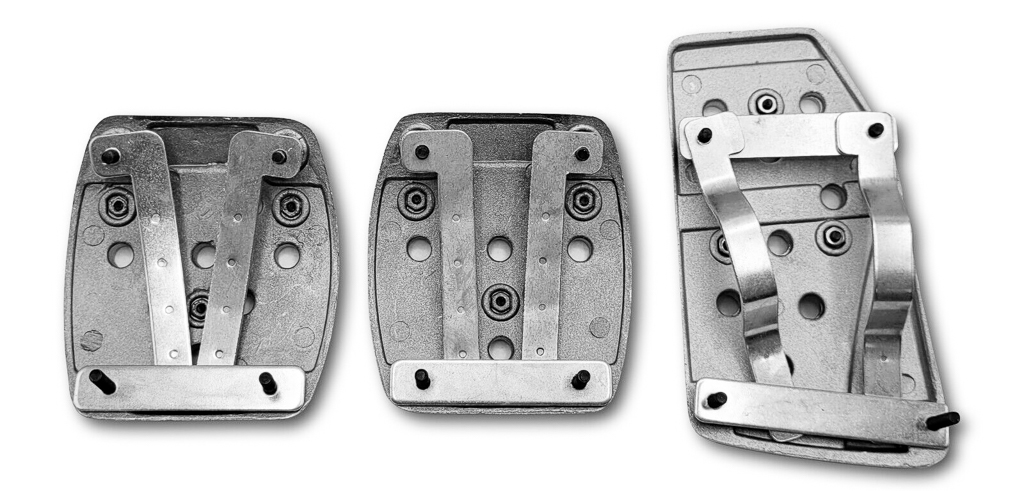
This rear view of a universal foot pedal set shows the mounting system.
Brake Pedal Care and Cleaning
If your brake pedal looks dirty, use a stiff-bristle brush and soapy water to remove any embedded grit. Afterward, dry the pedal with a rag, ensuring no soapy residue remains. Do not use interior vinyl preservative cleaners or rubber tire dressing on the pedal. They could leave a slippery and potentially dangerous residue.


